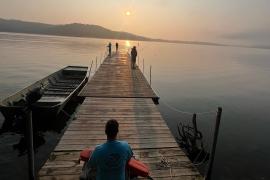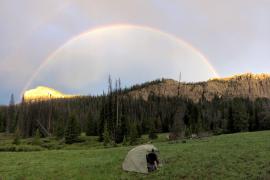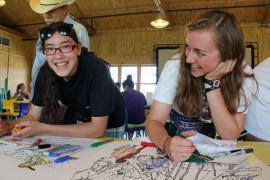Many camps are seeking to provide mental health services for their staff (and sometimes campers) — it is an increasing need in our field.
We (Girl Scouts of Middle Tennessee) were no exception. Our staff vocalized the need for outside counseling and/or a place to vent, and for space to process trauma and triggers at camp. In addition to this feedback, we noticed that staff were not as well equipped to manage interpersonal conflicts and process daily challenges as they have been in years past.
To meet this need, Girl Scouts of Middle Tennessee partnered with a local therapy practice to provide on-site, drop-in counseling for our staff this summer. To help your camp decide if this is the right fit for you, this blog post will outline our structure, what we learned, and our next steps in providing mental health resources for our staff.
The Partnership
As part of our partnership, our local therapy practice provided both staff training sessions and facilitated the presence of a therapist at each camp property. Sessions included self-regulation and self-care during staff training. We asked our camp directors to observe staff for common challenges, and based on camp director feedback, expanded training toward the middle and end of the summer to include boundary-setting and resources to have when seeking personal therapy. Therapists were then present on camp once per week for the duration of the summer. They were usually either stationed near a private space or were walking around and speaking with staff if situations arose. There was not a set schedule, nor a way for staff to schedule sessions with the therapist.
In pre-camp training, we presented this program as an additional tool for staff and outlined the parameter: our therapy partners should not be considered personal therapists for staff. Rather, they were there for to help with situations that had just occurred, bouncing ideas off of someone who wasn’t in your supervisory chain, and role-playing hard conversations. If staff needed more extensive or continuous therapy, we also had an EAP available to them to use. Staff were able to schedule time off around regular therapy sessions as needed — we encourage staff to continue established mental health routines while they work with us.
The Experience
We learned a lot through this partnership. Staff feedback and camp director observation confirmed what we already knew — this was needed! Staff often needed help processing things that happen at camp, and specifically needed someone who understands the demands of working at camp. Staff reported in feedback surveys that having the therapist on-site was helpful and made them feel valued even if they were not able to meet with them. The on-site therapists helped staff process triggering situations and gave them tools to advocate for themselves in some situations in which they wouldn’t ordinarily have done so.
Yet, we ended the summer with many questions and challenges. Our therapists reported that many staff did not have regular mental health care and used this program as their main source of care, rather than a supplemental tool. Scheduling was a challenge — many staff expressed that they wish they could have had time with the therapist but weren’t able to do so because of scheduling. If they were scheduled with campers across camp, it was sometimes difficult to arrange coverage so they could meet with our partners. In order to make a similar partnership work to the benefit of all staff, we’ll overhaul our structure and how we schedule this program. As such, we’re exploring the possibility of re-imagining the structure of this partnership in terms of offering referrals rather than on-site therapy. This would allow for staff to establish care and then work out scheduling with their admin team, rather than hoping the therapist will have a free moment.
Our therapy partners also expressed the need for us to frontload mental health expectations to prospective staff. We already do this during the interview process, but they noticed that many staff worked at camp because it was a safe space for them as campers while not accounting for the difference between the camper experience and staff experience. Based on this, we’re adding several components to our onboarding and training process to help staff think through where they are on their mental health journey. We want them to understand if summer camp is the right choice for them this year, and if it is, what supports they have in place for themselves.
In addition, staff all expressed that while they appreciated having this resource, that they felt the campers also needed this resource. While we are not able to provide therapy for our campers, we are exploring the possibility of hiring, as part of staff, a social worker, or someone who has advanced training and is present to focus on camper mental health and behavioral needs. In addition, we plan to offer Youth Mental Health First Aid to all staff for summer 2024.
In Conclusion
Partnering with a therapy practice was a great first step for our staff. It helped us better define what our needs are and gave us direction for our next steps. Even if offering on-site therapy is not part of your organization’s plan, I highly recommend consulting with local professionals to help you address the needs of your staff.
This blog was written on behalf of Project Real Job whose purpose is to support camps in the their efforts to recruit, hire, and retain staff.
Lauren Reichstein is the manager of camp and adventure programs with Girl Scouts of Middle Tennessee and a Doctoral Student in Health and Human Performance at Middle Tennessee State University. She has been an active member in the camping industry for over 10 years. Lauren is currently serving on ACA’s Staff Retention and Recruitment Steering Committee and can be reached at [email protected].
Photo courtesy of Camp Lightbulb in Los Angeles, CA
The views and opinions expressed by contributors are their own and do not necessarily reflect the views of the American Camp Association or ACA employees.





